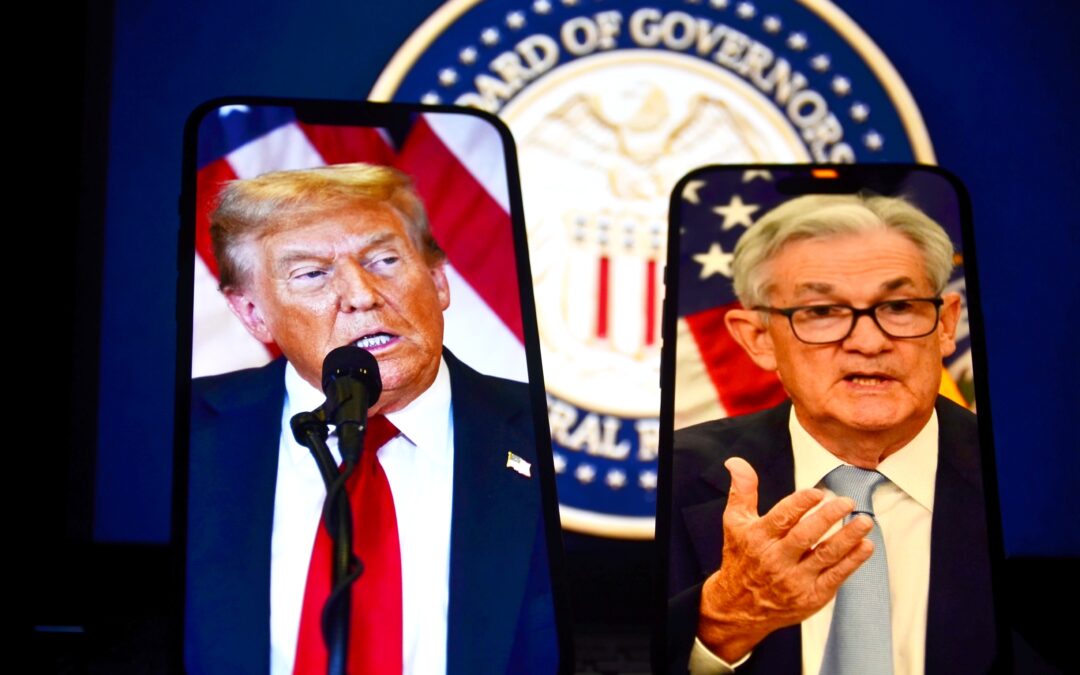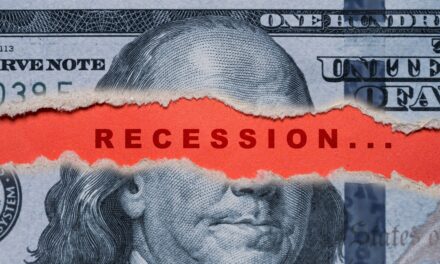President Trump clearly has a bit of a “love-hate” relationship with Federal Reserve chairman Jerome Powell.
After personally appointing Powell back in 2018, Trump has recently become increasingly critical of the Fed Chair. Earlier this week, the President went as far as calling Powell a “fool” who was misjudging inflation.
And frankly … Trump’s right.
I’ll show you why:
Video transcript:
Welcome to Moneyball Economics. I’m Andrew Zatlin, and today we’re going to talk about interest rate cuts — specifically the interest rate cuts that did not happen this month, but may happen next month.
Let’s talk about what the Fed needs to see in order to cut rates next month, because this month they decided whatever it was they needed to see, they weren’t seeing it. And instead, they announced that no rate cuts and they were in a “wait and see” posture.
Well, as a data-driven institution, they’re waiting to see some data, so let’s talk about what data they are not seeing just yet. Quite frankly, the markets didn’t care. They weren’t expecting a rate cut this month, but they are expecting one next month. So if this data does emerge, great, the markets will be happy.
But let’s talk about what happens if the data doesn’t materialize.
Now, the Fed, it’s an institution that is supposed to enable the economy to grow in a “Goldilocks” type of zone. Not too hot, not too cold, and so it’s got a dual mandate, keep employment up and keep inflation down.
So in order for inflation to be considered in the Goldilocks zone, it needs to be between 150,000 to 200,000 jobs per month. Anything lower than that, the economy is slowing and the fed’s tempted to cut rates. Anything higher than that, the economy’s growing and the Fed doesn’t need to cut rates. There’s plenty of jobs being produced. So let’s talk about the labor market…
Where are we at the beginning of the year?
We were not in a good place. Jobs are coming out roughly a hundred, 110,000 per month. January and February. Get to March and April, things perked up. Got about 175,000 jobs created per month. That’s that Goldilocks sweet spot. But remember, the Fed is supposed to be ahead of the curve. If the Fed does any kind of rate action, it takes a few months for it to diffuse through the economy. So they want to be a little bit early in whatever inflection’s going on.
So right now, the Fed is saying the labor market is fine and we don’t need to cut rates.
What they’re really saying is the labor market’s fine today and tomorrow. Is that the case? Well, I think the Fed is on thin ice here. I mean, right now, if you look at payrolls, like I said, it looks fine. 170,000 – 175,000. If you look at jobless claims, they perked up a little bit, but nothing to be frightened of and certainly nothing to panic and rush around and pull rates down.
But when you look at other data points, you recognize that we are definitely on a slowdown trajectory. We’ve got DOGE. DOGE is cutting hundreds of thousands of federal workers. Those federal workers are people who go out to get dinner, they put gas in the car, they do dry cleaning. Except without jobs, they don’t do any of that.
So the private sector is starting to show some cracks, and we’ve got manufacturing.
The tariffs have hit factories pretty hard, got a lot of things pointing to some forthcoming softness in the labor market, certainly enough so that the Fed should be willing to do a small cut.
Let’s talk about inflation. Here’s where I think the Fed has, the Fed has missed the party right now. Inflation is at a very (again Goldilocks), very mild 2.4%, and that’s down from where it was last year.
So what does that mean? Well, again, inflation is neither hot nor cold. If rates get cut and inflation goes up, that’s not a good thing. So there isn’t really a lot of room right now in inflation to tolerate whatever kind of frothiness comes when you cut rates, except folks, there is, you see, when we look at this headline number 2.4%, we have to recognize that that is a creation.
That is a creation of multiple different kinds of inflation out there. Inflation in food, inflation in energy, in healthcare, you name it, there’s so many components that make up inflation and all of those components, each one is moving to a different beat.
And so we get this sausage-making exercise once a month. It takes all these various services and commodities puts ’em together and says, well, this is the overall inflation, except 2.4% is actually incredibly misleading.
Take a look at these numbers. You see how some components are more important than others. The Fed has tried to craft together some kind of, excuse me, not the Fed, but the government has tried to craft a weighted average of what we spend money on to say this is what the typical household would be spending if they were out there spending all of their paycheck. Food takes up X percent energy takes up Y percent, shelter and so forth.
So when you look at each one of these components, what’s striking is actually there is no inflation out there.
Most of these components are not really inflating. In fact, some of them are even deflating. Why do we have 2.4%? Well, quite frankly, because of two components and two components only, that’s not good. When most of your inflation is derived from only two places and everywhere else you’re seeing deflation, that’s a sign that the economy is actually very slow and slowing that these other two are kind of anomalies and we need to look past them.
The first one is shelter, rent, mortgage, that kind of a thing. That has been high ever since Biden unleashed. 0% interest ever since we got to the covid love. It’s coming down, it’s slowing down, but as you can see, of that 2.4%, literally 1.4% comes just from shelter. That means if you look past shelter, if you ignore rent, you ignore mortgage.
We only have 1% inflation. That’s nothing. That’s the sign of a slowing economy, and guess what? It’s even a little bit worse than that.
Check this out. Motor vehicle insurance, what an obscure component, right? Motor vehicle insurance. And yet, because insurance inflation is so severe, its oversized impact means it’s adding another 0.2% to inflation taken together. You take shelter, you take motor vehicle insurance. Yeah, that weird niche component, and you have 1.6% inflation.
Folks, the real economy is barely budging. 0.8% is CPI, the Fed missed the boat. We are going to continue to see downward moves in inflation. We’re going to see downward moves in employment. So next month we’re going to have one more employment number. We’re going to have one more inflation number, and the Fed’s going to meet, and I guarantee you they’re going to be a little bit softer, just a little bit.
Will the Fed pull the trigger?
Well, not necessarily because again, 2.4% inflation goes down to 2.2%, still not there. If the Fed is in a wait and see zone right now, it’s because they’re not looking at the data, or I should say they’re looking at the data, but they’re denying it. Instead, they’re thinking, oh, these tariffs are going to lead to inflation and that’s where they’re wrong. I get it.
Trump has hijacked using his fiscal policy, has hijacked monetary policy. Not intentionally, but it is what’s happening. These tariffs have the potential to create inflation, but the reality is Trump is going to resolve most of this within May, so that by the time we get to June, the threat of inflation from tariffs, it’s not going to be a real threat, but a slowing economy that’s going to be very real. So the fed’s going to be out of step.
I think the Fed though, is going to recognize this over the next couple of weeks because I think Trump is going to start sealing some deals on the tariffs, and the Fed is going to be able to say, ah, we get it. Inflation, not the boogeyman. We thought everything is slowing down. Let’s throw a little bit of love out there that is going to make the markets surge. So we’re in a binary place.
In the next few weeks, we’re going to get some data that tells us employment’s slowing down, inflation’s slowing down. Feds should cut rates because tariffs, that’s the scenario we want to see. We will see that. Question is will the Fed act? If they do, hey man, you’ll just see the market continue to surge. Like I’ve been saying, it’s going to, if they don’t pull rates down, you will see a hissy fit, the likes of which we haven’t seen since April.
We’re in it to win it, folks. Zatlin out.

Andrew Zatlin
Editor, Andrew Zatlin’s Superforecast Trader





